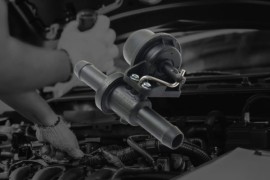{
"lazyNodes": false,
"abFitnotesFlag": false,
"abCrawlReviews": false,
"productOptionsCookie": false,
"orderDelayFlag": false,
"skipSessionCookie": false,
"covidMessage": false,
"fullTitleCookie": false,
"nrLoggerCookie": false,
"checkoutReviewCookie": false,
"productOptionSeqCookie": false,
"maintenanceFlag": false,
"bufferETACookie": false,
"multiShippingDiscountFlag": false,
"newFitmentFlag": false,
"surveyOptInFlag": false,
"crossSellFlag": false,
"skuMappingFlag": false,
"paySplitCookie": false,
"callDisableFlag": false,
"zipPaymentFlag": "u",
"hassleFreeReturn": false,
"lifetimeReplacement": false,
"cpn_off": false
}Need Help? Call Us1-866-529-0412
2010 Saturn Outlook
2010 Saturn Outlook Heater Valves
Refine by:
Shop Catalog
Showing 1 - 1 of 1 results
Sort by:
Part Number: AC1550766
Guaranteed to Fit
$56.99
Vehicle Fitment
- 2010 Saturn Outlook All Submodels All Engines
Product Details
Warranty : 24-months or unlimited mile AC Delco limited warrantyQuantity Sold : Sold individuallyProp 65 Warning :
![]() WARNING: This product can expose you to chemical which is known to the State of California to cause cancer and birth defects or other reproductive harm. For more information go to www.P65Warnings.ca.gov.
WARNING: This product can expose you to chemical which is known to the State of California to cause cancer and birth defects or other reproductive harm. For more information go to www.P65Warnings.ca.gov.
Page 1 of 1 | Showing 1 - 1 of 1 results
Popular Products

AC DelcoGM Original Equipment Series Heater Valve - Direct Fit, Sold individuallyManufacturer #15-50766
( Reviews) Questions, Answers
ACDELCO OE REPLACEMENT HEATER VALVES
The factory-original fit and lasting function of ACDelco’s OE replacement heater valves provide the perfect repair without breaking your budget. Established in 1899, ACDelco manufac...
Helpful Automotive Resources
Heating System PartsThe blower motor is a fan that forces air through either the heating or the cooling unit of the HVAC system. If you’re running the heater, the motor blows air over the heater core. The warmed air enters the passenger cabin, raising the temperature and fighting off the cold.
How a Heater Control Valve Works (with Diagram)Your car’s heater relies on hot coolant—from the engine’s cooling system—to warm the cabin. A typical cooling system has four primary components: the water pump, radiator, thermostat, and heater core.
A typical cooling system has four primary components: the water pump, radiator, thermostat, and heater core.




